ASN Experiment
Why?
- Largely due to interest and for educational/academic purposes
- Also because I wanted to know if it was possible
How?
- Making a network was much harder than expected, although when I went into it I didn't really know what to expect.
- I have attempted to document the process here.
What?
- I have got my own ASN (Autonomous System Number) from RIPE NCC.
- I have got my own /48 IPv6 PA range
- I have configured BGP with Bird2 to route traffic to my cloud server.
- I have used Krill for RPKI signing to make my routes trusted.
Constraints
- Cost
- I'm a student, not a multinational company. I didn't really have a budget for this but I also didn't want to be spending the £1k+ to become an LIR with RIPE.
- Time
- I'm in full-time education doing my A-levels and I have a part time job as well. I'd love to spend all day every day working on cool projects like this, but realistically that was never going to happen.
- Skill
- Whilst I've always considered myself technically skilled, and I use systems like Linux daily, have quite a background in things like DNS I had never done anything like this. All of this was new to me and I was learning on the job. Before I started, I had never heard of RIPE, IANA, RIRs, LIRs, PA/PI IPs, RPKI and I had never really touched anything to do with BGP.
Advantages
- Luckily I had a few advantages going into this
- An annoyingly long patience
- Some of this debugging took hours and was either undocumented entirely or the documentation was obscure and difficult to understand. But I had a keyboard and a caffeine fuelled determination to keep going.
- Some relevant experience
- I do study computer science, so a lot of concepts are not new to me. I knew what BGP was, I had ideas of lots of concepts such as the wandering trader problem and OSI model - all of which did help to contextualise things.
- Some of this was comparable to how DNS systems work, so I could draw on that knowledge.
- An annoyingly long patience
Requirements
- Now this is all over, what did I need?
- A cloud server (or any server really) from a provider that offers BGP. I used Frantech's BuyVM, but I hear over providers such as Vultr offer similar services for free as well.
- £30
- Technical knowledge
- A couple of hours
Disclaimer
- This article includes many major simplifications and is written from the perspective of an amateur exploring a lot of this for the first time. Please excuse this, and feel free to discuss changes or report issues to me.
Special Thanks
- This project would not have been possible without Lagrange Cloud, RIPE NCC, Frantech Solutions and NLNETLabs
- Thank you to all the amazing people at these organisations for their help and resources.
So how exactly does one gain an ASN?
- Good question. Getting your hands on an ASN isn't as difficult as it might sound, but it also isn't super easy.
- I found a helpful site that contained some LIRs who were offering an ASN registration service.
- Before applying, I made some objects on the RIPE database. This is documented alongside the rest of my RIPE objects further down.
- I initially reached out to Freetransit, but spent about a week and a half trying to sign some paperwork before I gave up with them.
- Then I decided to go for Lagrange Cloud as they were based in the UK and had a similar price. Lagrange had a much more automated process that I completely in about 5 minutes.
- I did have a few options to consider throughout the process such as PI or PA IP blocks.
- PA
- Provider Aggregated
- You have less control of the IP range
- It's cheap
- PI
- Provider Independent
- You have full control of the IP range
- It is not cheap
- PA it was
- My /48 block of IPv6 comes to about £7/year with the first year free. That's a total of 65,536 IPs. I think that'll be enough for me.
- PA
- Lagrange then submitted an application to the RIPE NCC on my behalf, who approved my request for an ASN and an IPv6 (PA) block within a couple of days.
Umm, what now?
- So being the highly prepared individual I am, I had no clue what to do next.
- I knew that I had the resources allocated which was what I thought the hard part would be.
- It wasn't the hard part.
- I logged into my shiny new Frantech server and got to Googling
- The way I saw it, there were 2 viable cloud routing programs.
- Bird (BIRD Internet Routing Daemon)
- FRRouting
- They both seemed like possibilities, and I did give both a shot but in the end I decided to use Bird.
RIPE Database
- Before you can do anything with RIPE, including apply for an ASN, you have to create a few objects
- But hold on for a second, what is the RIPE database?
- In a nutshell, the RIPE database is used to
- ensure all internet routing information is unique
- allow easy access to abuse contacts for network operators
- publishing information required to make the internet work
- In a nutshell, the RIPE database is used to
- RIPE do not have the only database in the world, and RIPE is not the only Regional Internet Registry (RIR)
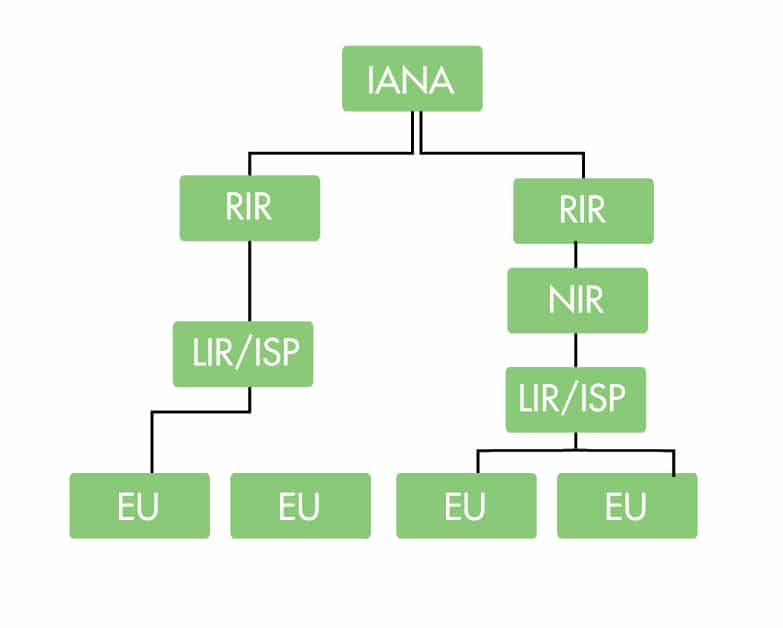
- I'm mostly working with LIRs and RIRs here, but knowing about the others involved is useful.
- IANA is globally the highest authority, they aggregate data from all RIRs
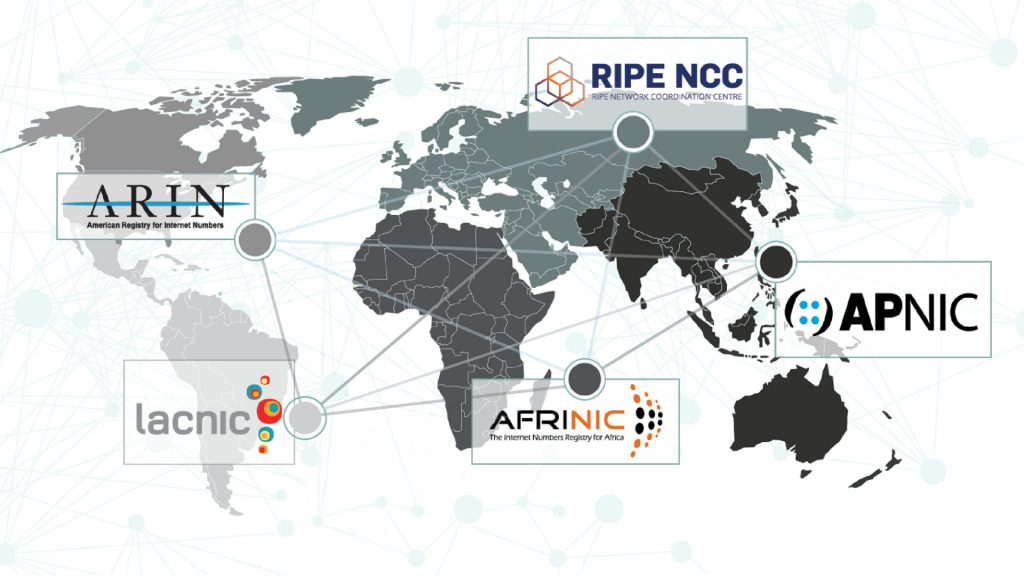
- RIRs are regionally assigned.
- LIRs and ISPs are generally service providers, and are usually fairly large organisations
- EU simply stands for end user, that's us.
- Back to making our RIPE objects.
- First thing's first, we need to make a
MAINTAINERand aPERSONpair. - This is required to do anything useful with the RIPE database.

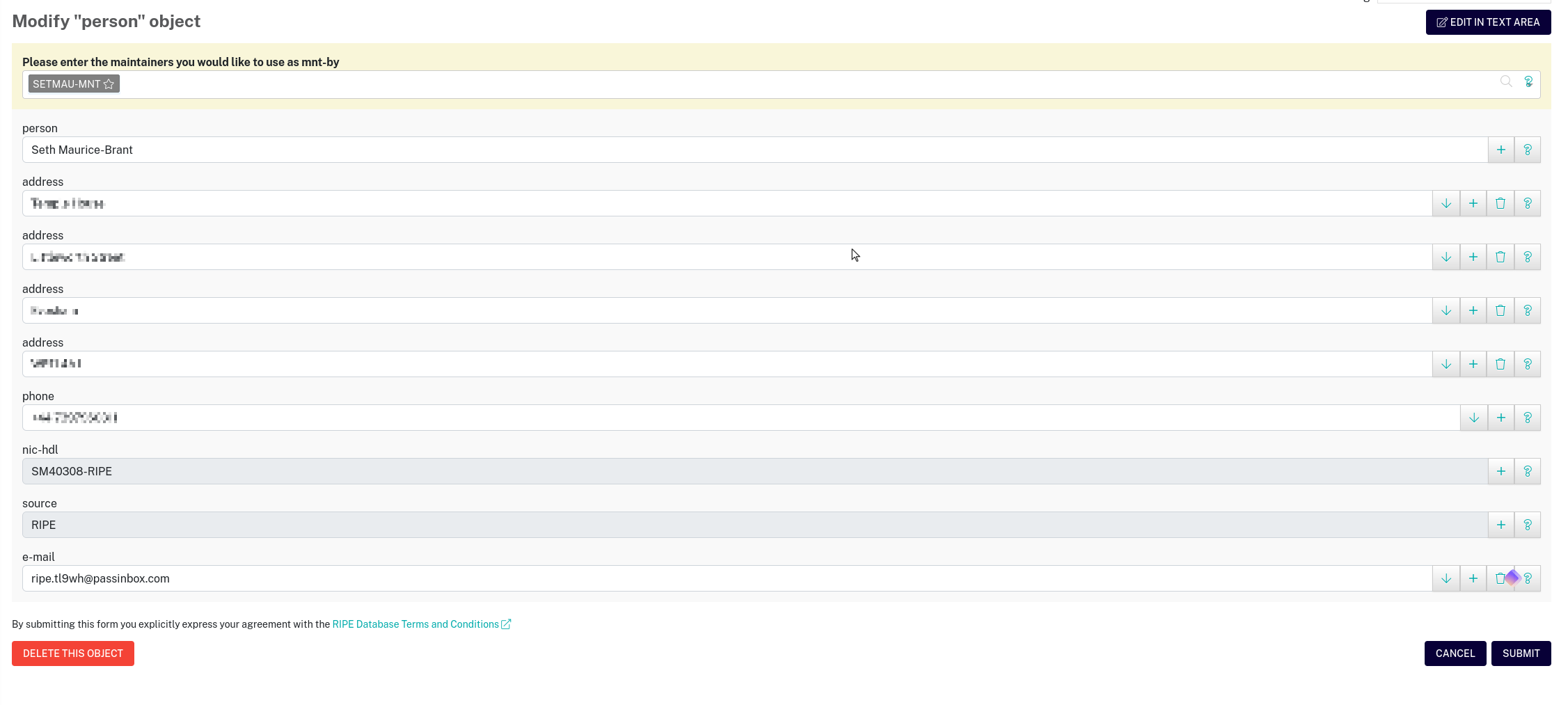
BGP with BIRD
- So for those that don't know, Bird is controlled 2 ways:
- A configuration file (typically
/etc/bird/bird.conf) - A command line utility (
birdc)
- A configuration file (typically
- The idea is you include your options in the config file and then use the command-line tool to make tweaks and verify things are doing what they're expected to.
- So, can we see the file that caused so much pain? You sure can.
#/etc/bird/bird.conf
log syslog all;
router id 0.0.0.0;
protocol static static_bgp {
ipv6;
route 2a0f:85c1:362::00/48 via 0.0.0.0;
}
protocol device { scan time 5; }
protocol direct {
interface "dummy*";
ipv6 { import all; };
}
protocol kernel {
ipv6 { export all; };
scan time 15;
}
protocol bgp frantech {
local as 215634;
source address 0.0.0.0;
neighbor 1.1.1.1 as 53667;
password "secret";
multihop 2;
ipv6 {
import none;
export where proto = "static_bgp";
};
graceful restart on;
}And now we're into the juicy bit.
- This is where we define our actual bgp route.
- We have set our ASN to local as, so when we advertise a BGP route, other networks know where it is coming from.
- We force set our source address to our router, you might be able to get away with not doing this, but it's a good idea.
- Our neighbour information was provided by Frantech, the IP is their router and the AS is, you guessed it, their ASN. We're sending our routing information to Frantech so they can share it with the world.
- Frantech also requires a password be used to ensure that a BGP route is being advertised by the correct people.
- Multihop simply tells bird we are not directly plugged into the neighbour. The
2is optional, but I dropped it in so bird knows I'm expecting their to be 2 hops on the route between my server and the Frantech router.- I found this out using a simple
traceroute
- I found this out using a simple
traceroute to 0.0.0.0 (0.0.0.0), 30 hops max, 60 byte packets
1 1.1.1.2 (1.1.1.2) 0.142 ms 0.128 ms 0.144 ms
2 1.1.1.1 (1.1.1.1) 0.380 ms 0.352 ms 0.301 ms
- With the key information being the BGP state being
Established. Believe me when I say that took a while. We had a lot of being stuck inConnectingandSocket: Connection closed. (It turns out Stallion was blocking connections because I hadn't enabled them) 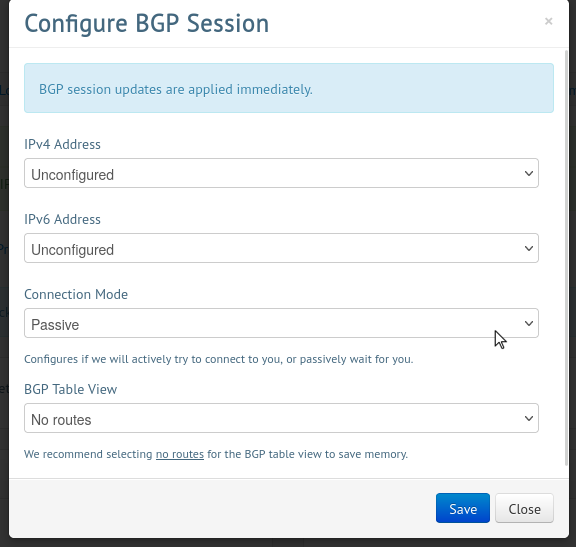
- This needed me to set the IP addresses to my server IPs in order for BGP requests from my server to be accepted. D'uh!
RPKI
- So I had got my BGP routing working now - whoopie. However, Frantech had now informed me that as my prefixes were not RPKI signed that Stallion (their control panel) would not whitelist me.
- But why? What makes RPKI important?
- RPKI is effectively the IP equivalent of HTTPS for HTTP. (it's not, but it does a similar job). If a BGP route is RPKI signed, then we know it actually came from the intended ASN and not someone who knows what Google's ASN is.
- This meant I had to figure out how to sign a prefix with RPKI. Obviously my first point of contact was RIPE, as I recalled seeing an RPKI portal on RIPE.
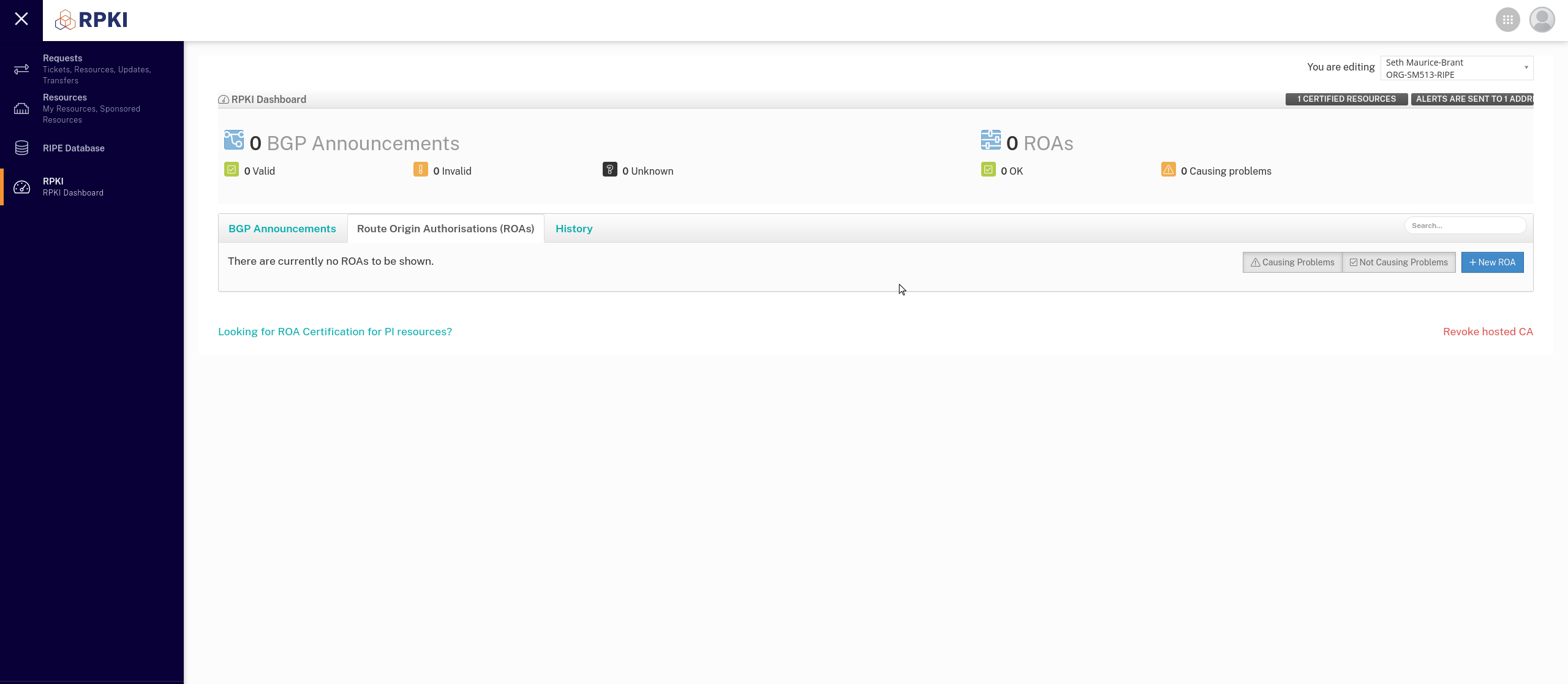
So I headed on over, chose for RIPE to host things for me and clicked the New ROA button.
I was prompted to fill out a few fields, nothing too complex. But that's obviously when something went wrong.

Ripe was reporting that the prefix I entered was not a certified resource. It was definitely my prefix though.
Odd, maybe I can fix this?
So off to create a route object I went
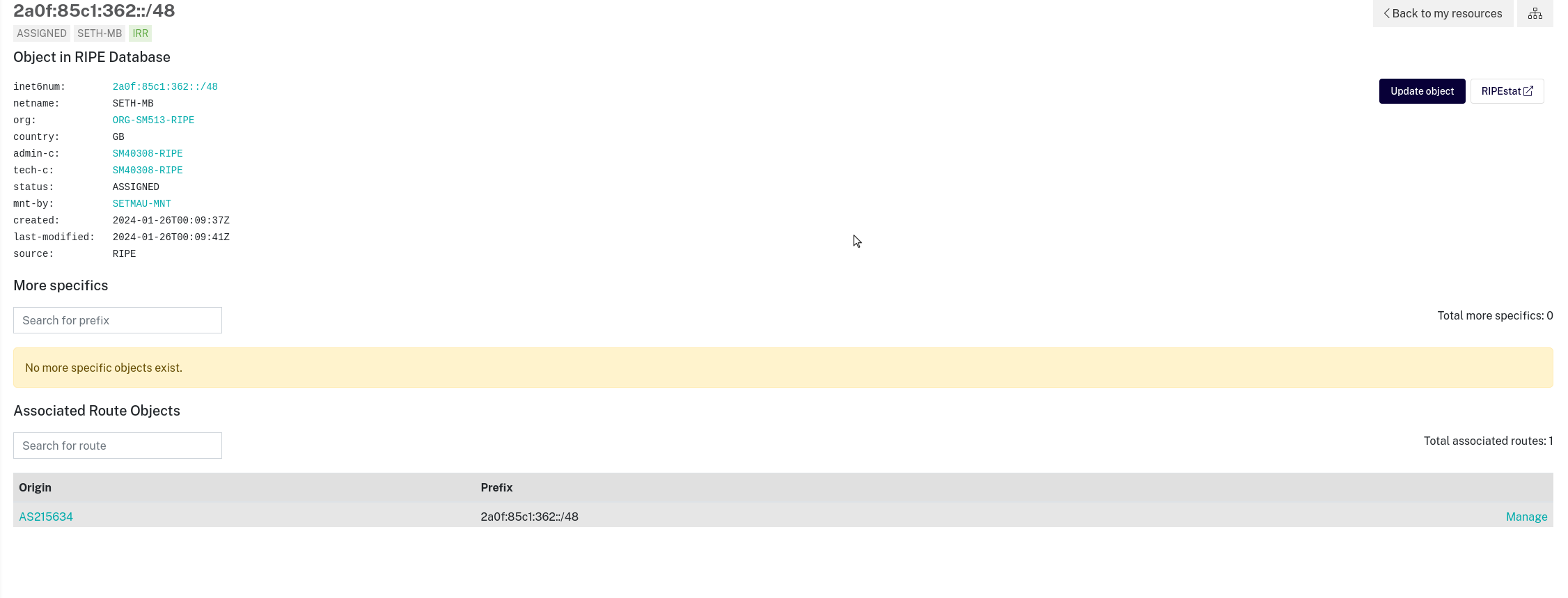

Everything seemed in order

So, what was wrong?
Well, after a bit of digging I discovered that because my IP block was PA not PI, I was unable to issue an RPKI certificate for it.
So, I had to contact Lagrange Cloud as my sponsoring LIR they would probably know what to do.
I spoke with Nate from Lagrange, who was fast to reply and helpful as always. He said that there were two options, I could either have them configure the RPKI route for me or I could run my own Krill server.
Krill
- So fast forward a bit and here I am trying to setup a krill server.
Feb 01 06:34:58 localhost systemd[1]: krill.service: Start request repeated too quickly.
Feb 01 06:34:58 localhost systemd[1]: krill.service: Failed with result 'signal'.
- But then I considered the fact that I was using a 512MB RAM server, so maybe that wasn't enough. I ran
dmesg | grep oom-killerto check for any issues with memory, and bingo.
[870804.049696] krill invoked oom-killer: gfp_mask=0x140cca(GFP_HIGHUSER_MOVABLE|__GFP_COMP), order=0, oom_score_adj=0
[870850.692584] krill invoked oom-killer: gfp_mask=0x140cca(GFP_HIGHUSER_MOVABLE|__GFP_COMP), order=0, oom_score_adj=0
[870875.469858] krill invoked oom-killer: gfp_mask=0x140cca(GFP_HIGHUSER_MOVABLE|__GFP_COMP), order=0, oom_score_adj=0
...
- Krill needed more memory. So it was off to find one of my other servers that I could run Krill on.
- And just like that, we had Krill.
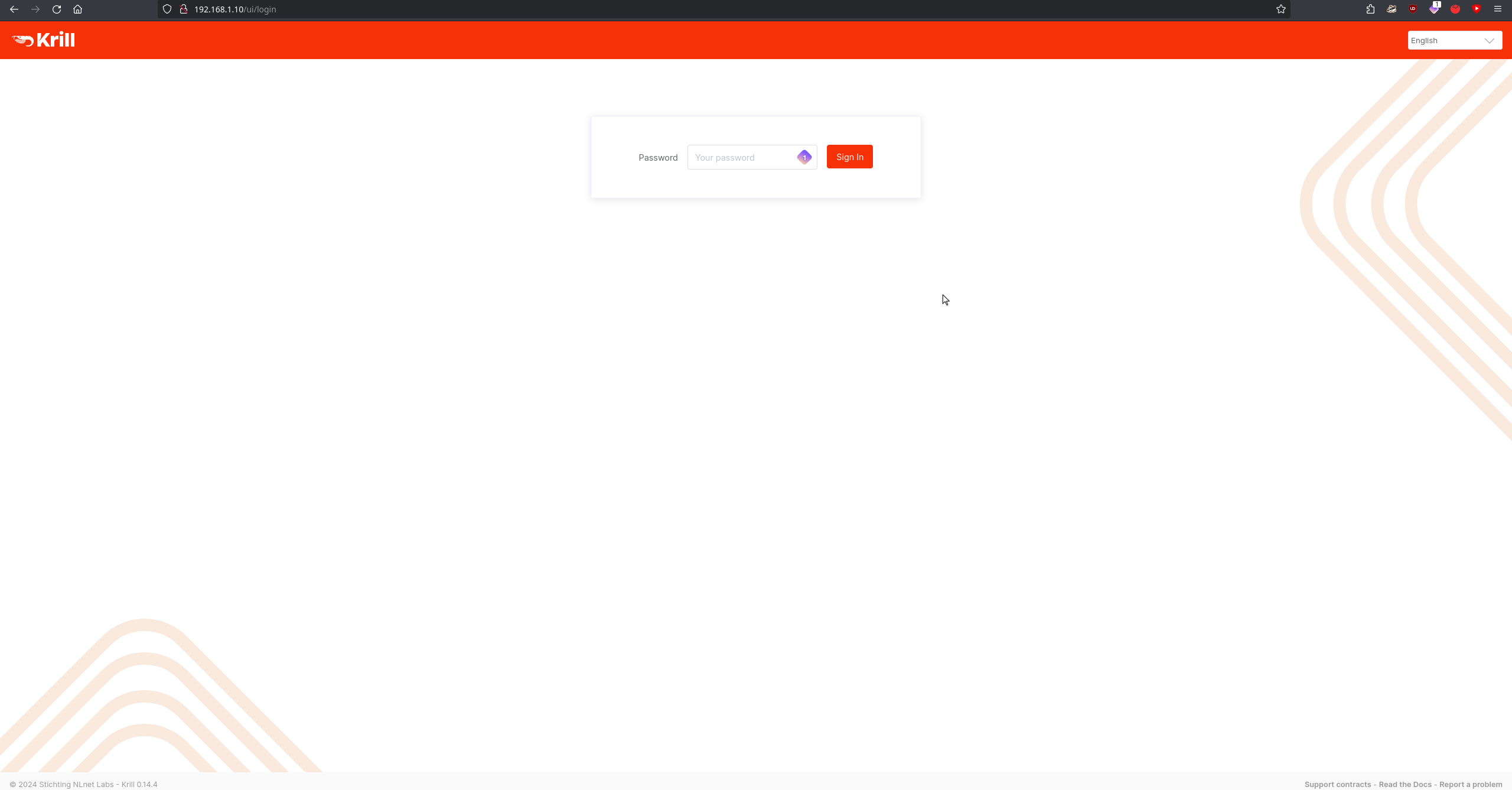
- A simple
sudo cat /etc/krill.conf | grep admin_tokenand we had our password. - Next step was to make myself a certificate authority, I chose the inventive
SETH-MBname and moved on. - However I still had my hosted CA on RIPE, so I had to go and revoke that before I could continue.
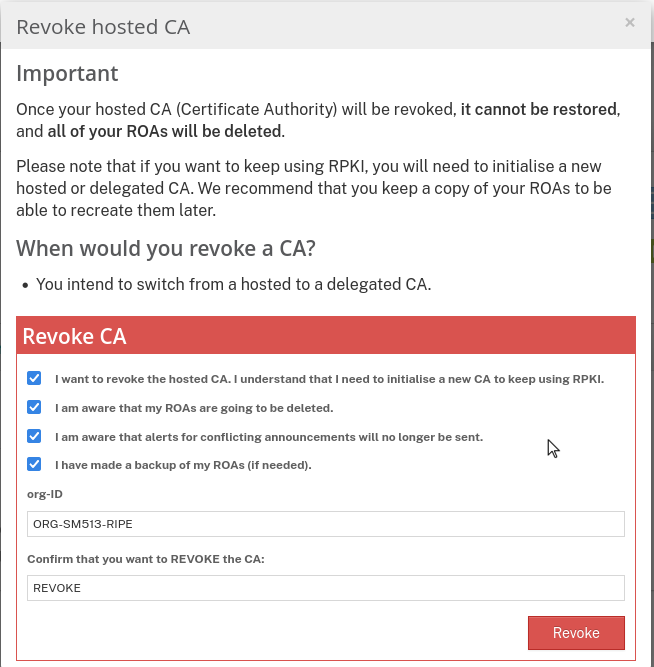
- Now I could make a delegated CA under RIPE and generate a child request XML file from Krill to link myself up.
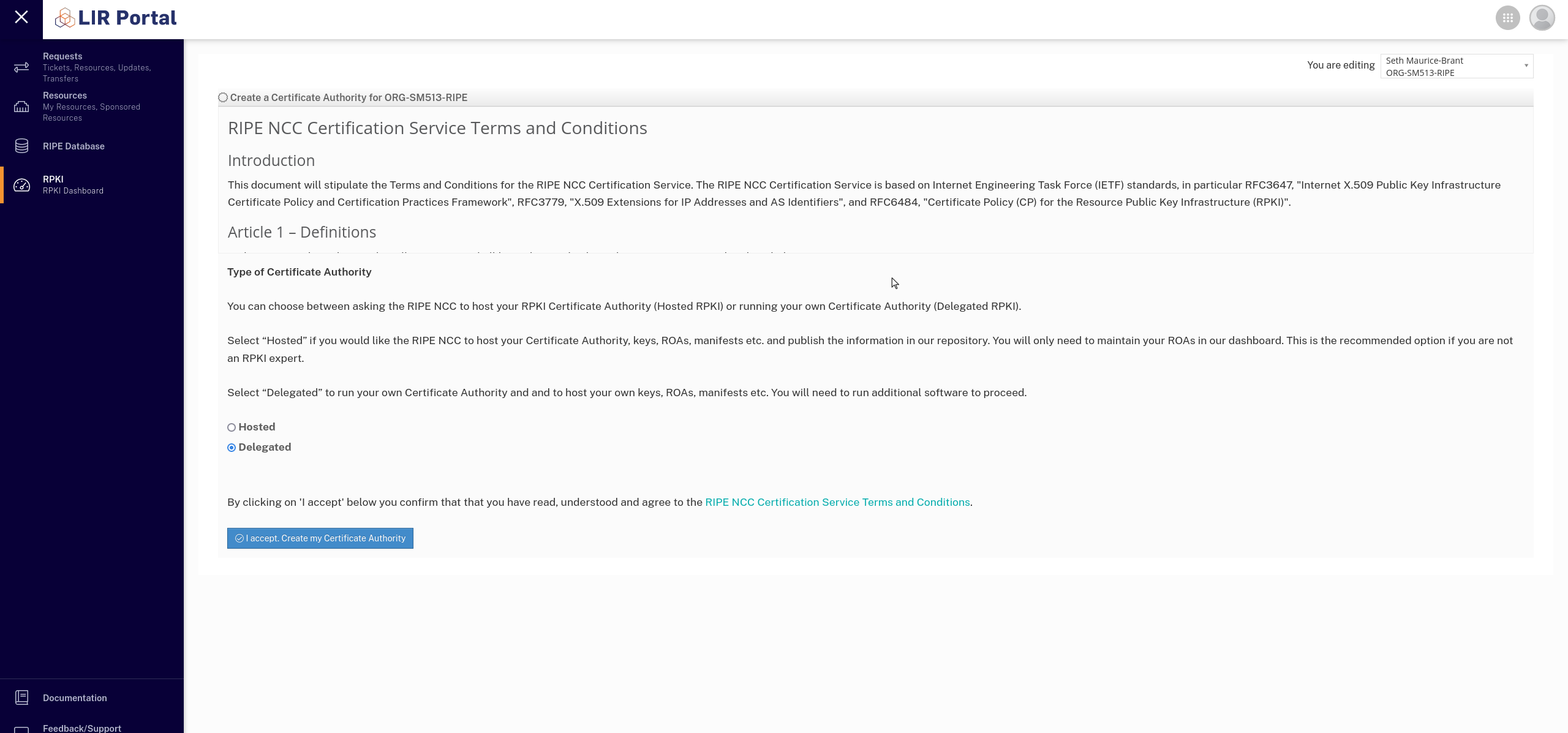


- Now let's go and stick the generated server identity file into Krill.
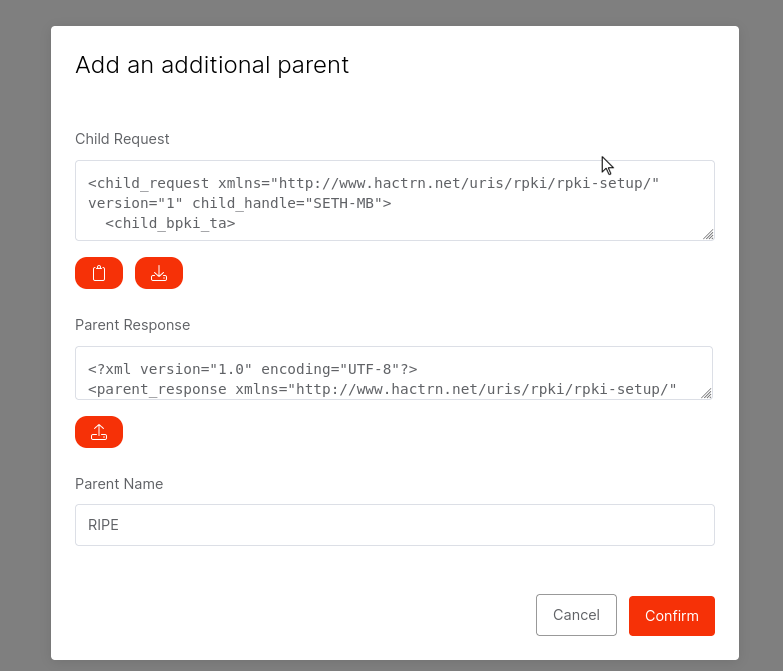
- Parent added, now we needed to make a repository.
- I decided then to reach out to Lagrange as my ROA certification wasn't working, and I likely needed them to delegate access to me.
- Lagrange took another child request and had to forward it to their upstream provider to get me a parent request.
View route on Cloudflare's RPKI tool
Success!
Once RPKI routes were published, my routes started propagating to Frantech's peers.
If your network has IPv6 support, you can connect to a little nginx webserver I have running on the router at route0.sethmb.xyz
Future Plans
I would quite like to stop relying on the Frantech server at some point. For this, I would run a Raspberry Pi on my home network and publish BGP announcements from there. This is limited however as my ISP does not allow BGP announcements (I asked) so I would need to use BGP over GRE and partner up with someone like Tunnelbroker to get this working. Further investigation required!